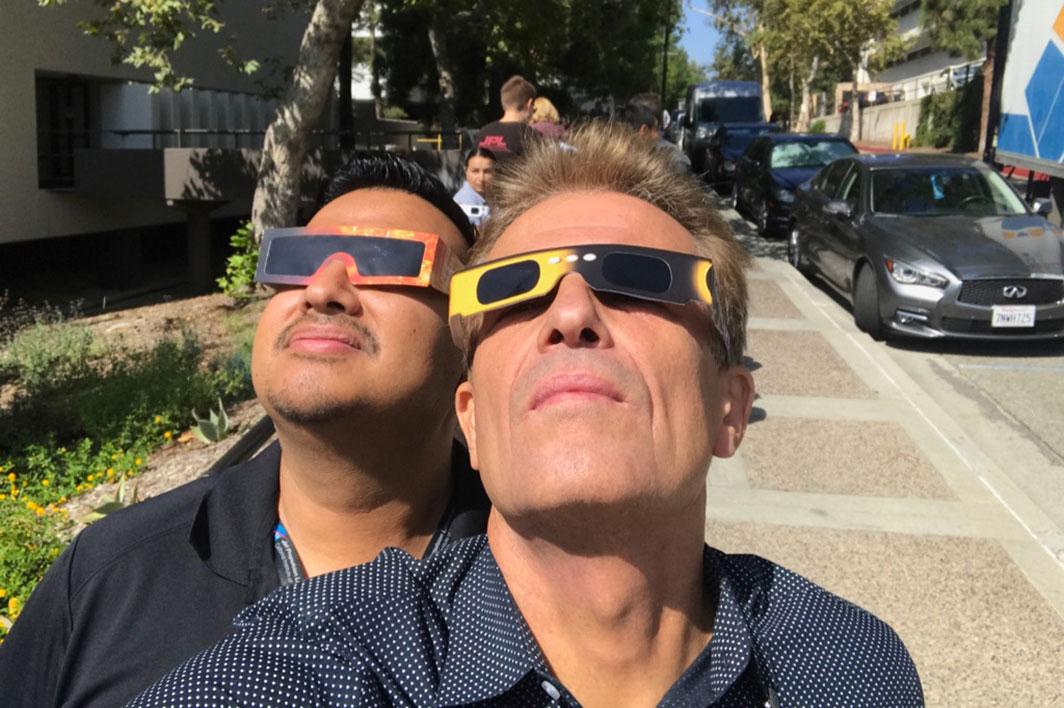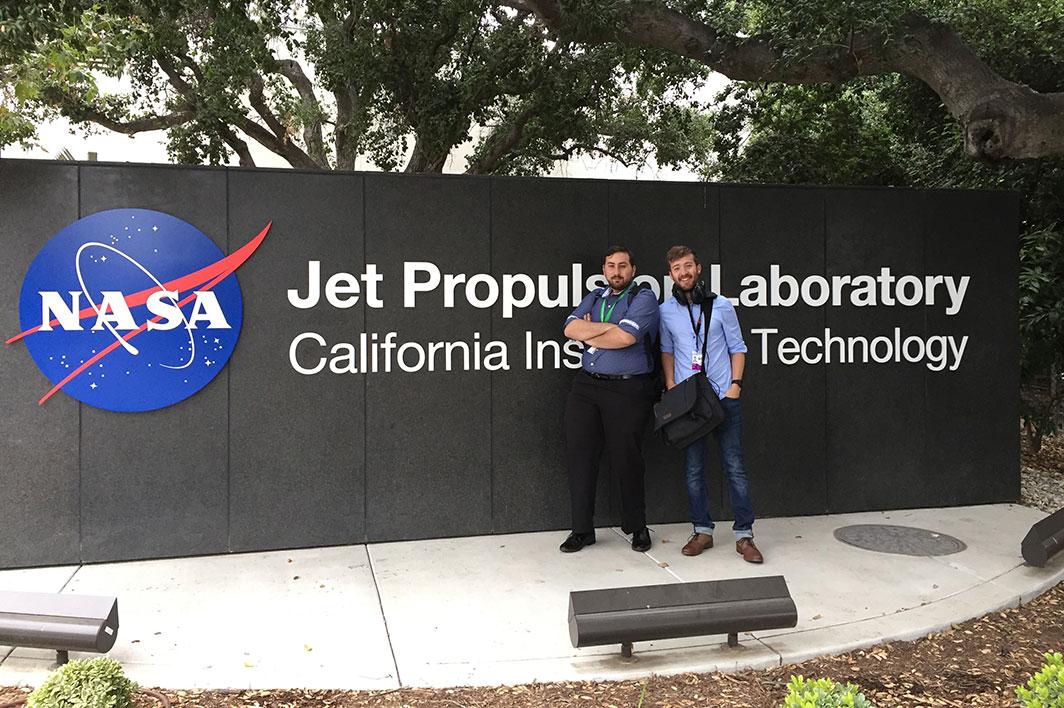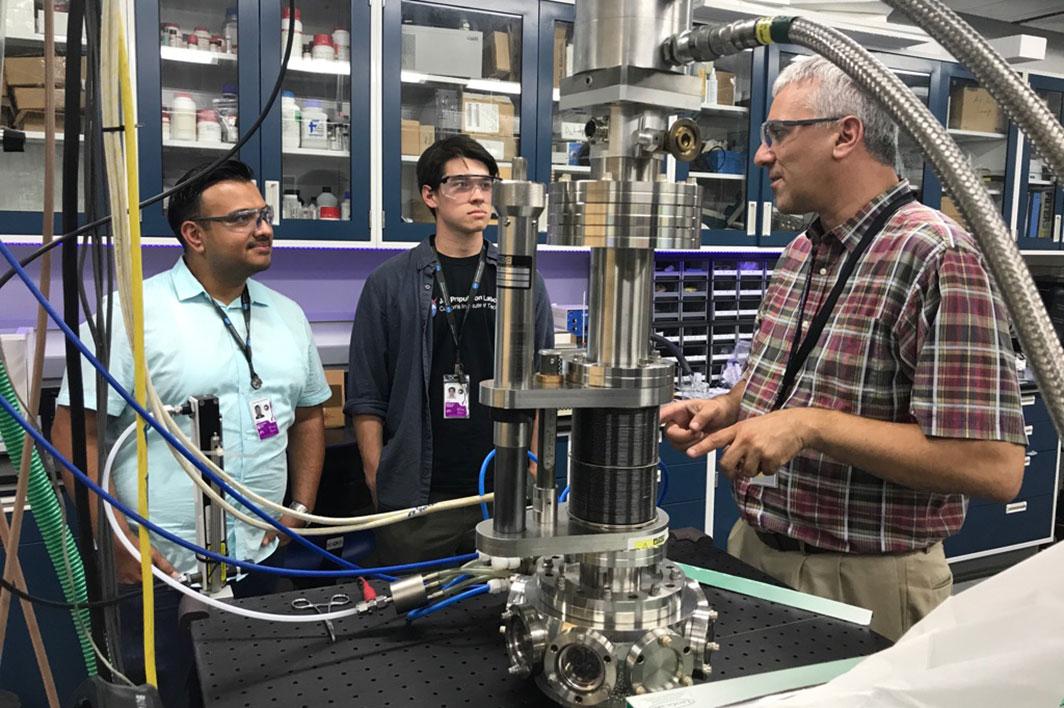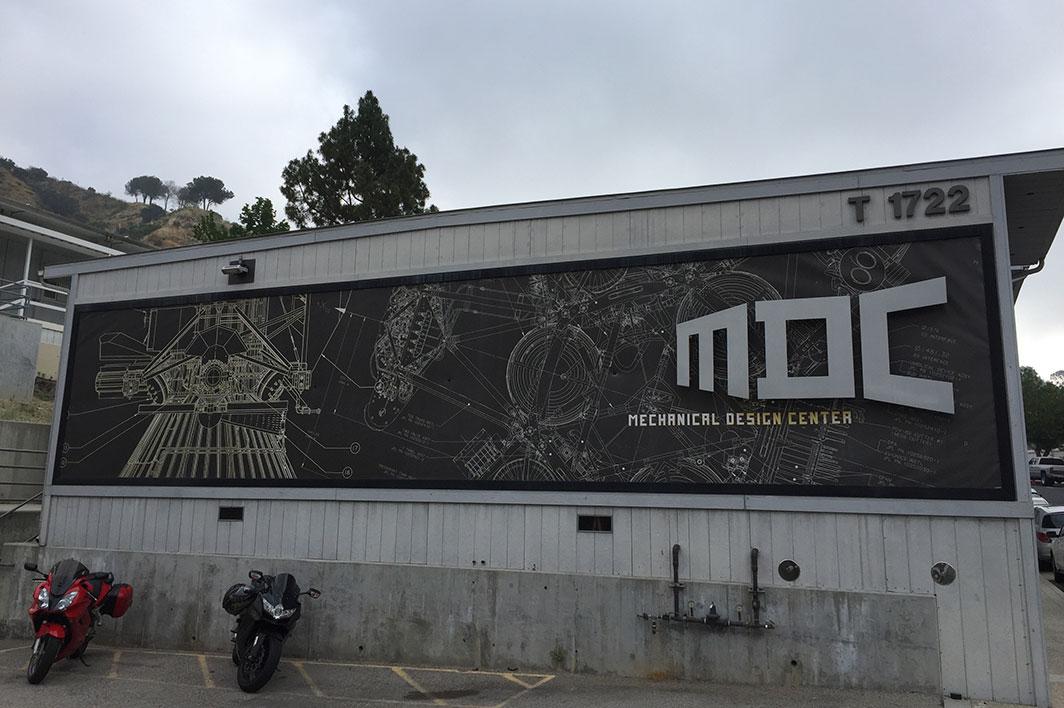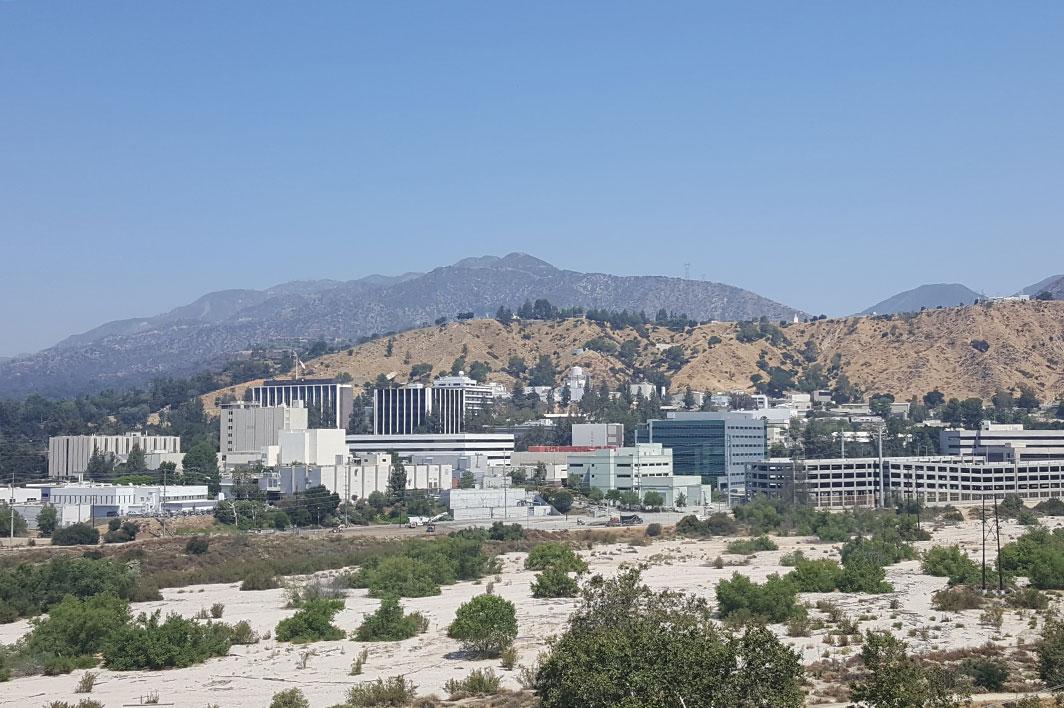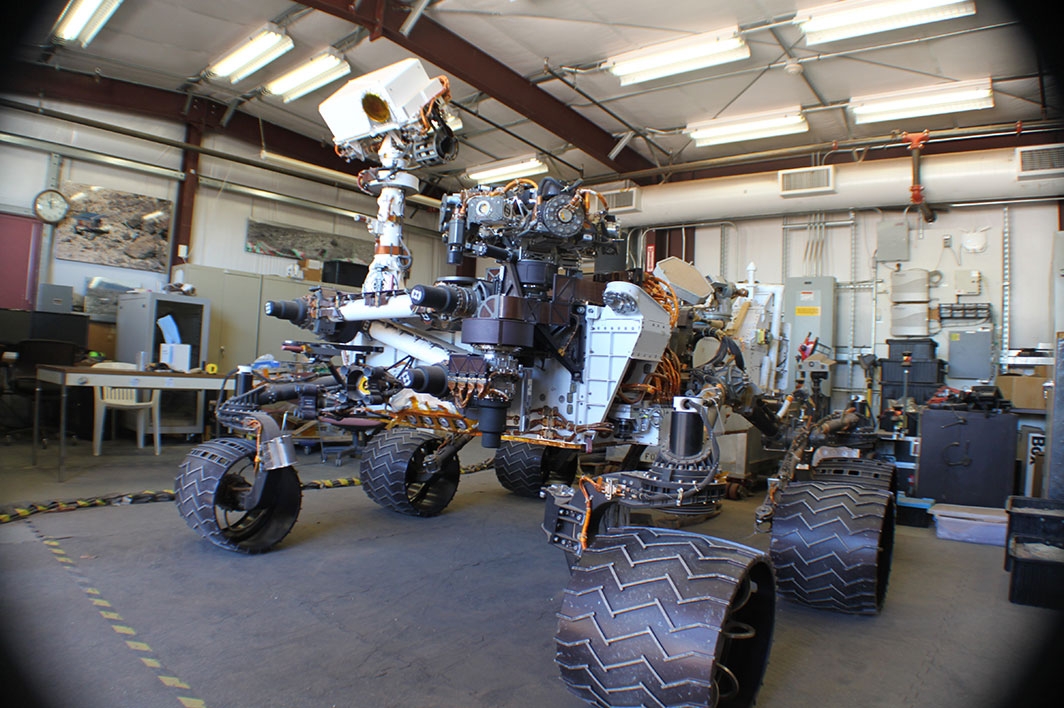An out-of-this-world internship
Two ASU engineering students spend summer at NASA's Jet Propulsion Laboratory working on technology of tomorrow

Two Arizona State University engineering students with stars in their eyes spent the summer living the ultimate space lover’s dream: an internship at NASA’s Jet Propulsion Laboratory.
They built parts that will fly to Mars, glimpsed the goals and tech of tomorrow’s missions, celebrated the 40th anniversary of the Voyager mission, and viewed the solar eclipse from the Pasadena, California, campus with thousands of others working to take humanity into the solar system.
“It’s an amazing place,” said Nathan Barba, a senior majoring in mechanical engineering and a guest blogger for the Planetary Society. “It’s unlike anywhere I’ve worked.”
Barba and Robert “RJ” Amzler, a senior majoring in aerospace engineering, spent months at the birthplace of NASA. JPL is the leading U.S. center for robotic exploration of the solar system, with 19 spacecraft and 10 major instruments carrying out planetary, Earth science and space-based astronomy missions.
Amzler worked on engineering the bit carousel subsystem for the Mars 2020 Rover, which moves samples in and out of the rover. Interns normally don’t work on flight design.
“I spent two weeks designing a half-inch hole,” he said. “It’s crazy the amount of thought that goes into everything.”
Even though Amzler hasn’t finished earning his bachelor’s degree, he has now worked on four missions that will fly: two in low-Earth orbit, one to the moon and one to Mars.
The Mars 2020 Rover is heavily based on the Curiosity Rover. In space engineering terms, it has heritage. NASA likes systems that have been into space — “flown” — and proved themselves.
“I attended a two-hour-long lecture on ‘don’t change anything,’ ” Amzler said.
One thing that surprised Amzler was how much everything costs. A small ball bearing that might cost $10 can cost a few thousand dollars because it has to survive the vacuum of space, Martian dust and hundreds of other hazards. It also absolutely cannot fail.
“I knew what I was doing was going to Mars,” Amzler said.
JPL’s campus is extremely casual. The interns were the most formally dressed people there.
“It’s a lot more like a campus than I thought it would be,” Amzler said. “It had an almost Silicon Valley feel.”
A lot of people were working on the Europa mission. The mission is being planned for launch in the 2020s, arriving in the Jupiter system after a journey of several years to investigate the habitability of Jupiter’s icy moon Europa.
“Whether you’re developing a mission depends on how stressed you are,” Amzler said. The engineers were driven. Software coders worked longer hours but were more casual about it.
The atmosphere was inspiring, both students said. History is around every corner.
“It was cool being in the same place as all this historic stuff,” Amzler said.
Barba has always wanted to work at JPL. He didn’t know anyone there, but he drove over and attended its open house every summer and networked. He met his mentor, who sponsored his 14-week internship this year.
Barba got to sample a lot. “I got the wide breadth,” he said.
Much of what he worked on could not be disclosed. He worked in mission formulation, JPL’s wish list for future missions.
“I was kind of a fly on the wall,” he said.
He spent two days at a rapid version of the same thing. He worked on concepts that have no heritage, like a lander for an ocean planet. He helped engineer a sample collecting subsystem called an adaptive caching assembly. He worked on the science for a future mission. He also engineered parts on the Mars helicopter, which, again, he couldn’t discuss in detail, other than to say it’s exactly what it sounds like.
He jumped from project to project throughout the day. His mentor mapped out his workflow and meetings to maximize success.
The best part for Barba? He may become a permanent fixture on the JPL campus.
“I think so,” he said. “I had nine interviews.” They threw oddball engineering questions at him like how many Ping-Pong balls can fit in a 747.
His dream job? “Being on a team that discovers life on another planet.”
Barba’s advice to anyone working is to get a good mentor and to find out what the metrics are for success, then hit those marks.
It’s easy to get star-struck at a place like JPL, so stay focused on execution, “but don’t forget to take it all in and live in the moment,” Barba said.
Top photo courtesy of Nathan Barba
More Science and technology

Celebrating 34 years of space discovery with NASA
This year, NASA's Hubble Space Telescope (HST) is celebrating its 34th anniversary of the world's first space-based optical telescope, which paved the scientific pathway for NASA's James Webb Space…

Making magic happen: Engineering and designing theme parks
The themed entertainment industry is widespread and diverse, encompassing everything from theme parks to aquariums, zoos, water parks, museums and more. The Theme Park Engineering and Design…

AI-equipped feeders allow ASU Online students to study bird behavior remotely
ASU Online students are participating in a research opportunity that's for the birds — literally. Online Bird Buddies is a project that allows students to observe birds remotely, using bird feeders…
